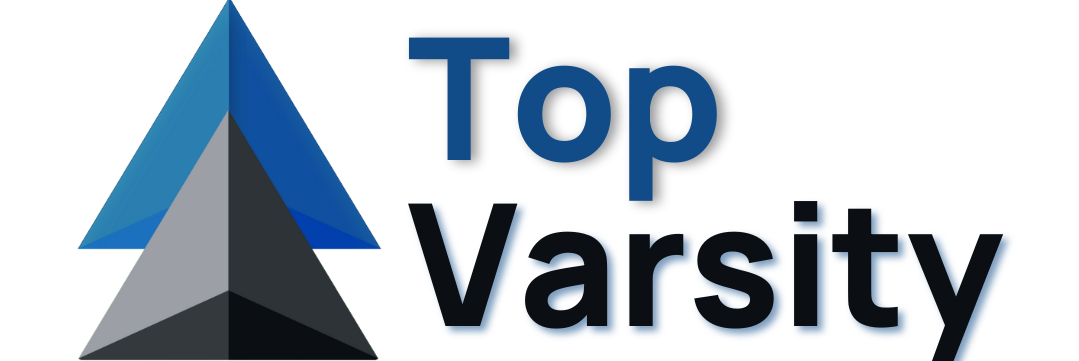In today’s rapidly evolving job market, the roles and skills required in various industries are continuously shifting. One of the most significant areas of growth is data analytics. This field, characterized by the extraction of insights from vast amounts of data, has become crucial across multiple sectors including business, healthcare, finance, and more. The question arises: Can a Bachelor of Arts (BA) student become a data analyst? The answer is a resounding yes. This blog will explore how a BA student can transition into data analytics, the skills required, and the steps to make this shift successful.
 is hiring for Business Analyst Intern
is hiring for Business Analyst Intern

Understanding Data Analytics
Data Analytics Defined
Data analytics involves the process of examining datasets to draw conclusions about the information they contain, increasingly with the aid of specialized systems and software. These technologies enable organizations to make more informed business decisions. The process includes several phases such as data cleaning, data transformation, and data modeling, and it is used to uncover patterns, correlations, and trends within data.
Types of Data Analytics
- Descriptive Analytics: This type focuses on summarizing historical data to understand changes over time.
- Diagnostic Analytics: It aims to determine why something happened by comparing descriptive data sets to identify dependencies and patterns.
- Predictive Analytics: This uses statistical models and machine learning techniques to forecast future outcomes based on historical data.
- Prescriptive Analytics: The most advanced type, it suggests possible courses of action based on the data predictions.
The Versatility of a Bachelor of Arts Degree
A Bachelor of Arts degree is often seen as diverse and flexible, typically encompassing fields such as humanities, social sciences, and liberal arts. While these disciplines may not seem directly related to data analytics at first glance, they provide several transferable skills that are highly valuable in the field of data analytics.
Key Skills Gained from a BA Degree
- Critical Thinking: BA programs often emphasize critical thinking and problem-solving, which are essential for analyzing data effectively.
- Communication Skills: The ability to communicate findings clearly and effectively is crucial in data analytics, as it often involves presenting complex information to stakeholders.
- Research Skills: Many BA programs involve extensive research work, teaching students how to gather, evaluate, and interpret data.
- Creativity: The ability to think creatively can help in identifying unique patterns and solutions that others might miss.
Pathways for BA Students to Enter Data Analytics
1. Acquiring Technical Skills
To transition into data analytics, a BA student must acquire certain technical skills. Here are some key areas to focus on:
Programming Languages: Learning languages like Python, R, and SQL is fundamental. These languages are widely used in data manipulation, statistical analysis, and querying databases.
Data Visualization Tools: Tools such as Tableau, Power BI, and Matplotlib are used to create visual representations of data, making it easier to understand and communicate insights.
Statistical Analysis: Understanding statistics is crucial for analyzing data and interpreting results accurately.
2. Online Courses and Certifications
Numerous online platforms offer courses and certifications in data analytics. Websites like Coursera, edX, Udacity, and DataCamp provide structured learning paths that cover essential topics. Certifications from these platforms can add significant value to a resume.
3. Practical Experience
Gaining practical experience is essential. This can be achieved through internships, project work, or even contributing to open-source projects. Building a portfolio of completed projects can demonstrate practical skills to potential employers.
4. Networking and Mentorship
Joining professional networks and seeking mentorship can provide guidance and opportunities. Platforms like LinkedIn, local meetups, and professional organizations like the Data Science Society can be valuable resources.

Leveraging BA Skills in Data Analytics
1. Storytelling with Data
A key component of data analytics is the ability to tell a story with the data. This involves not only presenting the data but also providing context, interpreting results, and suggesting actionable insights. BA graduates, with their strong communication and narrative skills, are well-equipped for this aspect of the job.
2. Interdisciplinary Approaches
BA graduates can bring unique perspectives by applying interdisciplinary approaches to data analytics. For example, a sociology graduate might use their understanding of social behavior to analyze consumer data, while a psychology graduate might apply their knowledge of human cognition to user experience research.
3. Qualitative Data Analysis
While much of data analytics focuses on quantitative data, qualitative data analysis is also important. BA students, particularly those from social sciences and humanities backgrounds, are often trained in qualitative research methods, which can be incredibly valuable in understanding the nuances behind the numbers.
Challenges and How to Overcome Them
1. Overcoming Technical Gaps
One of the main challenges for BA students is the technical learning curve. However, this can be addressed through:
- Self-Study: Utilizing free and paid resources online to learn at one’s own pace.
- Bootcamps: Intensive training programs that focus on practical skills and job readiness.
- Formal Education: Pursuing additional degrees or certifications in data science or analytics.
2. Building Confidence
Transitioning to a new field can be daunting, but building confidence is key. This can be achieved through:
- Practice: Regularly working on real-world projects.
- Feedback: Seeking constructive feedback from peers and mentors.
- Small Wins: Celebrating small achievements along the learning journey.
Success Stories
To illustrate that a BA student can become a successful data analyst, let’s look at some real-life examples:
Example 1: Jane Smith, Sociology to Data Analyst
Jane Smith, a sociology graduate, started her career in a non-profit organization. She often worked with survey data and found a passion for analyzing trends and patterns. She took online courses in Python, SQL, and Tableau, and started applying these skills to her work. Her ability to interpret data within a social context made her insights invaluable, leading to her promotion to a data analyst position.
Example 2: Mark Johnson, History to Data Science
Mark Johnson graduated with a degree in history and initially worked as a teacher. His interest in patterns and trends in historical data led him to explore data analytics. Mark enrolled in a data science bootcamp, learned programming and statistical analysis, and started a blog where he analyzed historical events using data. His unique approach caught the attention of a tech company, and he was hired as a data analyst.
Steps to Transition into Data Analytics
1. Assess Interest and Aptitude
Before embarking on this journey, it’s crucial to assess your interest and aptitude in data analytics. This can be done by:
- Taking Introductory Courses: Many free courses can provide a basic understanding of data analytics.
- Reading: Books and articles on data analytics can offer insights into what the job entails.
- Talking to Professionals: Networking with current data analysts to understand their day-to-day responsibilities.
2. Set Clear Goals
Setting clear, achievable goals is essential. This might include:
- Learning a Specific Skill: For example, mastering SQL within three months.
- Completing a Course: Finishing a data analytics certification program.
- Building a Portfolio: Completing three data analysis projects within six months.
3. Develop a Learning Plan
A structured learning plan helps maintain focus and track progress. This might include:
- Daily/Weekly Study Schedule: Allocating specific times for learning.
- Resource List: Compiling a list of courses, books, and tutorials.
- Milestones: Setting regular milestones to evaluate progress.
4. Gain Practical Experience
Applying theoretical knowledge to practical scenarios is crucial. This can be done through:
- Internships: Gaining hands-on experience in a real-world setting.
- Freelance Projects: Taking on small projects to build a portfolio.
- Hackathons and Competitions: Participating in events to test skills and learn from others.
5. Network and Seek Mentorship
Building a professional network and seeking mentorship can provide guidance and open doors to opportunities. This can be achieved by:
- Joining Professional Organizations: Becoming a member of groups like the Data Science Society.
- Attending Conferences and Meetups: Networking with professionals in the field.
- Online Communities: Participating in forums and online groups related to data analytics.
Conclusion
The journey from a Bachelor of Arts degree to a career in data analytics is not only possible but can be highly rewarding. The skills developed in a BA program, such as critical thinking, communication, and research, provide a strong foundation for data analytics. With the right mindset, dedication to learning new technical skills, and practical experience, BA graduates can successfully transition into this exciting and rapidly growing field.
By leveraging their unique perspectives and interdisciplinary approaches, BA graduates can bring valuable insights and innovation to data analytics, proving that diverse backgrounds can enrich the field. Whether through self-study, formal education, or practical experience, the path to becoming a data analyst is open to anyone willing to put in the effort, making it a viable and fulfilling career option for Bachelor of Arts students.

